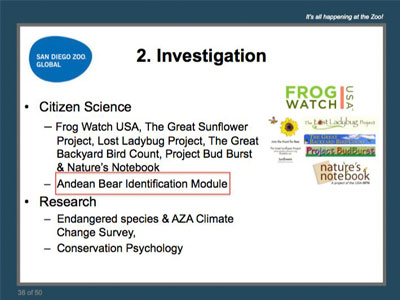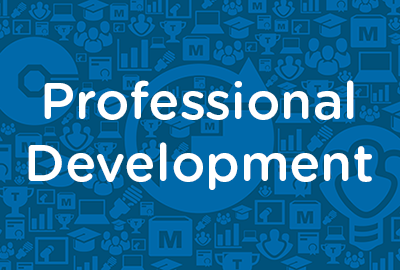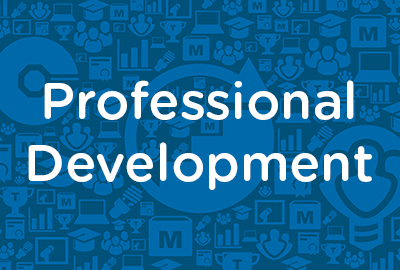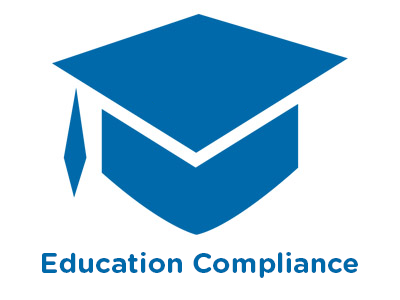 |
Ending Extinction: The Basics - Module 2 |
2.50 |
The goal of this course is to lead the fight against extinction by taking a leadership role and collaborating with others to save species from extinction using science-based techniques and fostering collaboration and cooperation. |
 |
Plant Conservation |
2.50 |
The goal of this course is to lead the fight against extinction by taking a leadership role and collaborating with others to save species from extinction using science-based techniques and fostering collaboration and cooperation. |
 |
Sexual Harassment Prevention: Recognizing Harassing Behavior |
0.33 |
The goal of this course is to identify behavior that constitutes sexual harassment and understand the impact of sexual harassment in the workplace. |
 |
Superskilled: Reducing Turnover and Increasing Retention |
1.00 |
The goal of this course is to help you gain understanding and insight on the importance of promoting life skills training for agencies employing home health care paraprofessionals. Life skills training is a way to help the home health care agencies reduce turnover and increase retention of the home health care paraprofessional. |
 |
Mindfulness |
1.00 |
The goal of this course is to educate caregivers about the benefits of incorporating mindfulness into the activities of elderly care patients. Practicing mindfulness can promote improvements in both physical and psychological symptoms as well as positive changes in health attitudes and behaviors in both elderly care patients and caregivers alike.
|
 |
Sexual Harassment Prevention: Understanding Management Issues |
0.25 |
The goal of this course is to assess the need for a sexual harassment policy in an organization and respond appropriately to a sexual harassment accusation. |
 |
Neonatal Mammal Care |
2.50 |
The goal of this course (and final exam) is to explore the importance of neonatal assisted care and the role it plays in protecting species in managed care and the struggle to save species from extinction. |
 |
School-Age Care as a Family Service: Emphasis on Planning Opportunities for Family Involvement |
2.00 |
The foundation for getting parents involved in school-age programs is to keep parents well informed about what is happening in the program. Quality programs also provide parents with opportunities to make suggestions and give feedback on program services through suggestion boxes, feedback forms, and surveys. When parents are encouraged to have input in the program, they develop trust and confidence in the program, and feel a sense of pride and ownership. They are more likely to participate as resourceful partners with program staff when they know their ideas are welcome and valued. Finally, because parents are all different from each other, it's important to provide many different opportunities for them to connect with the program. Staff in quality school-age programs recognize that all parents don't have to be involved in the same way. |
 |
Course 10: School-Age Care as a Family Service – Part Two |
2.00 |
The foundation for getting parents involved in school-age programs is to keep parents well informed about what is happening in the program. Quality programs also provide parents with opportunities to make suggestions and give feedback on program services through suggestion boxes, feedback forms, and surveys. When parents are encouraged to have input in the program, they develop trust and confidence in the program and feel a sense of pride and ownership. They are much more likely to participate as resourceful partners with program staff when they know their ideas are welcome and valued. Finally, because parents are all different from each other, it’s important to provide many different opportunities for them to connect with the program. Staff in quality school-age programs recognize that all parents don’t have to be involved in the same way. |
 |
Food Service Worker: Annual Food Safety Training |
1.00 |
The Food Service Worker: Annual Food Safety Training course is designed to provide participants in the food industry with a basic understanding of food safety in order to uphold industry standards and reduce, or eliminate, the incidences of Foodborne Illness (FBI). This course is aimed towards assisting managers who are responsible for ensuring food safety. |
 |
Conservation Education: A Brief History, Current Challenges and Future Directions |
1.00 |
The field of conservation education has experienced significant paradigm shifts since its said-to-be inception in the 1960's. While many advances have been made in the field of conservation education, many challenges and varying viewpoints remain. This is especially true as many conservation related issues are underpinned by political, economic and cultural opinions and allegiances. Using the literature and projects underway at the San Diego Zoo Institute for Conservation Research and beyond, we will discuss these changes and challenges, while exploring what the future of conservation education may have in store. |
 |
Avian Conservation Programs How To Become Involved |
1.00 |
The field conservation and the zoo communities are partnering at an increasing rate to conserve birds in the wild and in zoos. Avian management techniques that were developed in zoos are being utilized to benefit wild populations. Developing your skills and experiences has a direct impact on species in the wild while also creating career development opportunities. Learn how to become more involved in local and international avian conservation. |
 |
Interviewing Skills: EEO Guidelines |
0.50 |
The Equal Employment Opportunity Commission (EEOC) administers and enforces Title VII, which prohibits discrimination in employment on the basis of race, color, religion, sex (including gender identity, sexual orientation, and pregnancy), national origin, age (40 or older), disability, or genetic information. Other federal, state, and municipal laws also prohibit discrimination on these, and other, bases.
In this course you will learn to: list the provisions, general principles, and key terms of EEO, and identify appropriate and inappropriate interview questions, including those that are not permissible according to the law. |
 |
Interviewing Skills: EEO Guidelines (Instructor Guide) |
0.50 |
The Equal Employment Opportunity Commission (EEOC) administers and enforces Title VII, which prohibits discrimination in employment on the basis of race, color, religion, sex (including gender identity, sexual orientation, and pregnancy), national origin, age (40 or older), disability, or genetic information. Other federal, state, and municipal laws also prohibit discrimination on these, and other, bases.
In this course you will learn to: list the provisions, general principles, and key terms of EEO, and identify appropriate and inappropriate interview questions, including those that are not permissible according to the law.
This Instructor's Edition of this course includes notes and suggestions to assist you in presenting the material, whether in an in-person classroom setting, or as an instructor-led online or distance-learning course. It also provides you with the answers to questions found in mid-lesson activities, as well as in the quiz that concludes the course. |
 |
Understanding the Behavior of Children and Youth |
2.00 |
The development of children and youth can cause them to behave in ways that can be trying for even the most knowledgeable and experienced staff. When staff understands what is driving the behavior, they can help to guide and encourage acceptable behaviors. This course will provide participants with the knowledge and skills necessary to prevent unwanted behavior by meeting the needs of children and youth before they act out. |
 |
Introduction to Aging with Intellectual and Developmental Disabilities |
0.50 |
The course presents a general overview of aging with intellectual and developmental disabilities, as well as an overview of specific disabilities, such as Down syndrome, cerebral palsy, and epilepsy. |
 |
CERT Unit 1: Disaster Preparedness |
1.00 |
The Community Emergency Response Team (CERT) program educates volunteers about disaster preparedness for the hazards that may occur where they live. This course covers the functions of CERT and how CERT fits into your community's emergency preparedness structure. The types of hazards that can affect communities and the hazard's potential to impact people, health, and infrastructure are discussed in this course. In addition, this course also will teach you how to face a potential disaster.
It is just one of many health and safety courses we offer. This course will help you learn the best practices for keeping yourself safe and healthy when on the job. |
 |
Working with Clouded Leopards in Thailand |
1.00 |
The clouded leopard is a charismatic and shy big cat native to the jungles of South East Asia. There are only 277 clouded leopards in a managed environment worldwide. In this presentation we go to the Kheow Khao Open Zoo in Thailand to work with 34 clouded leopards housed at the Clouded Leopard Breeding Consortium. We will learn about the hands-on strategy used in breeding two very different pairings of clouded leopards. Visiting the native country of the clouded leopard will not only broaden your perspective and your base knowledge of the species but will also teach you about the customs, culture and climate of their native habitat. |
 |
Youth Development Trends: Focus on Older Youth: Developmental Needs |
1.00 |
The Center for Early Adolescence at the University of North Carolina and the Search Institute have found that early adolescence is a time of rapid change in youth development and developmental needs. For many children, the characteristic needs of early adolescence begin to emerge as early as age nine, when children are still in elementary school and attending traditional school-age care programs. School-age care professionals who understand these emerging needs are better equipped to create successful program experiences with older children in their programs. In this course, we will explore the developmental needs of older youth. |
 |
Youth Development Trends: Focus on Older Youth: Programming Approaches |
1.00 |
The Center for Early Adolescence at the University of North Carolina and the Search Institute have found that early adolescence is a time of rapid change in youth development and developmental needs. For many children, the characteristic needs of early adolescence begin to emerge as early as age nine, when children are still in elementary school and attending traditional school-age care programs. School-age care professionals who understand these emerging needs are better equipped to create successful program experiences with older children in their programs. In this course, we will examine programming approaches that address the needs of older youth. |
 |
Course 33: Youth Development Trends: Focus on Older Youth |
2.00 |
The Center for Early Adolescence at the University of North Carolina and the Search Institute have found that early adolescence is a time of rapid change in youth development and developmental needs. For many children, the characteristic needs of early adolescence begin to emerge as early as age nine, when children are still in elementary school and attending traditional OST programs. OST professionals who understand these emerging needs are better equipped to create successful program experiences with older children in their programs.
The number of quality OST programs for children between five and twelve is steadily growing across the country. At the same time, there is increasing public interest in establishing programs that can also address and support the out-of-school needs of children over age twelve. For many years, communities tried to meet the needs of older youth by a problem-solving approach that focused on helping youth by fixing what was wrong. New trends in youth development take a more positive approach and are focused on working with youth to create positive outcomes.
OST professionals who are knowledgeable about adolescent development and developmental needs and are knowledgeable about youth development research and trends can play important roles in helping their communities design and develop the next level of program services for children over the age of twelve. By learning about ways to support the developmental needs of older youth, OST professionals can join with others to create strategies and programs for continuing to build on the positive experiences younger children have in their OST programs. |
 |
Youth Development Trends: Focus on Older Youth |
2.00 |
The Center for Early Adolescence at the University of North Carolina and the Search Institute have found that early adolescence is a time of rapid change in youth development and developmental needs. For many children, the characteristic needs of early adolescence begin to emerge as early as age nine, when children are still in elementary school and attending traditional OST programs. OST professionals who understand these emerging needs are better equipped to create successful program experiences with older children in their programs.
The number of quality OST programs for children between five and twelve is steadily growing across the country. At the same time, there is increasing public interest in establishing programs that can also address and support the out-of-school needs of children over age twelve. For many years, communities tried to meet the needs of older youth by a problem-solving approach that focused on helping youth by fixing what was wrong. New trends in youth development take a more positive approach and are focused on working with youth to create positive outcomes.
OST professionals who are knowledgeable about adolescent development and developmental needs and are knowledgeable about youth development research and trends can play important roles in helping their communities design and develop the next level of program services for children over the age of twelve. By learning about ways to support the developmental needs of older youth, OST professionals can join with others to create strategies and programs for continuing to build on the positive experiences younger children have in their OST programs. |
 |
Youth Development Trends: Focus on Older Youth (Collection) |
2.00 |
The Center for Early Adolescence at the University of North Carolina and the Search Institute have found that early adolescence is a time of rapid change in youth development and developmental needs. For many children, the characteristic needs of early adolescence begin to emerge as early as age nine, when children are still in elementary school and attending traditional OST programs. OST professionals who understand these emerging needs are better equipped to create successful program experiences with older children in their programs.
The number of quality OST programs for children between five and twelve is steadily growing across the country. At the same time, there is increasing public interest in establishing programs that can also address and support the out-of-school needs of children over age twelve. For many years, communities tried to meet the needs of older youth by a problem-solving approach that focused on helping youth by fixing what was wrong. New trends in youth development take a more positive approach and are focused on working with youth to create positive outcomes.
OST professionals who are knowledgeable about adolescent development and developmental needs and are knowledgeable about youth development research and trends can play important roles in helping their communities design and develop the next level of program services for children over the age of twelve. By learning about ways to support the developmental needs of older youth, OST professionals can join with others to create strategies and programs for continuing to build on the positive experiences younger children have in their OST programs. |
 |
Building Upward: BLS Pharmacology Lesson 1—Albuterol |
1.50 |
The Building Upward Series is designed for the EMT who would like to review their basic skills and learn a little more than what was offered in the standard original course. If you are an EMT who is looking for a challenge and would like to know what questions to ask, this series is for you. Most BLS providers find the world of pharmacology to be one of the more confusing topics in prehospital medicine. This is the first lesson in a series that gives the BLS provider an opportunity to relate some advanced concepts to their practice as BLS providers. We begin with the commonly used medication albuterol sulfate and discuss many fundamental concepts that every provider should know when administering medications in a prehospital setting. Final Exam: This multiple choice exam is designed to test your knowledge of the material you just reviewed. You have two attempts to gain a 75% or higher on this exam. Please take your time and answer each question carefully. |
 |
Overview of the Americans with Disabilities Act |
0.50 |
The Americans with Disabilities Act prohibits discrimination based on disability by protecting qualified individuals with disabilities from employment discrimination, and by requiring employers to provide reasonable accommodations. The Americans with Disabilities Act also protects qualified persons with disabilities from discrimination in many areas of higher education, including admission, academics, and research. It applies to all post-secondary educational programs, whether or not they receive federal financial assistance. |


























